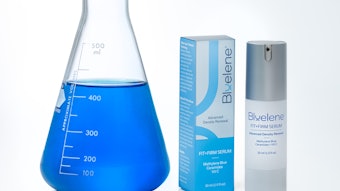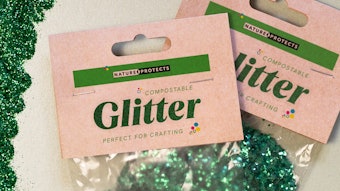This article originally in the August 2011 issue of Perfumer & Flavorist magazine. All rights reserved.
Spanish flavor and fragrance company Eurofragance has developed a scent very few people have previously experienced—the smell of outer space. The basis of this project came from Roberto Álvarez del Blanco, an associate professor of marketing at the Instituto de Empresa in Madrid and a visiting professor at the Haas School of Business at the University of California, Berkeley, as part of his recently published book, Fusión Perfecta: Neuromarketing (Neuromarketing: The Perfect Fusion; Pearson).
“Professor Álvarez had the idea to include the odor of space, which curiously seems to really exist, as a vivid example in his book,” explains Bettina Perisson, a Eurofragance perfumer working on the project. “However, he not only wanted to do this in a descriptive way, but wished to have the odor physically applied to a page in the book so that the reader could experience the smell of space first hand.” Working closely with a flavor team lead by flavorist Alfonso Gómez, Perisson and her perfumer team sought out the smell of space, studying accounts of astronauts who had discussed the fragrance that clung to their space gear—suits, helmets and gloves—after they’d returned from a space walk. “Some of them try to explain the strange odor of the space suits of their colleagues after a walk in the space, when they come back to the spacecraft,” Perisson notes. The perfumers and flavorists found a great number of astronauts agreed on the characteristics of the smell without any significant discrepancies—a mixture of molten iron and grilled meat.
“To recreate the odor of the space was exciting and to work together with flavorist was also very stimulating,” Perisson notes. “This project was a definite collaboration between the flavor and fragrance divisions, because the final scent has different facets, some of them related to the flavors field, such as the grilled meat, and some others more perfumistic, like the watery notes, minerals, steel and ozonic notes.”
The fragrance’s development also brought the team into contact with materials outside their usual palettes. “The most difficult part of the project was to keep the balance in the final result and also to work with some raw materials we are not used to, but that were basic to reach the character,” says Perisson. “Like other projects, the secret is to discover the interaction of the raw materials between them and be able to see all the new nuances and effects created. The raw materials palette is very big, and we can always be surprised by the infinite combinations that can be made.”
Once the Eurofragance team had a fragrance that was approved by Álvarez, they worked with a lab to microencapsulate the scent in order for it to be included in the ink for the book. Perisson explains, “We sent different samples to the company that microencapsulated the scent so they could check the suitability of [them], because of the nature of the process that could eliminate some olfactive notes.” Once that was finalized, the end result was a scratch-and-sniff card in Álvarez’s book featuring a photo of an astronaut and the scent of outer space.
“It is a different sensory experience,” says Perisson of the scent. “It offers a mixture of several notes that could maybe be recognized, like grilled meat, but we also expect these notes in this combination to feel unique to people.” The project also led to a few additional daydreams. “We hope one day be able to actually check the odor of space,” Perisson laughs.










